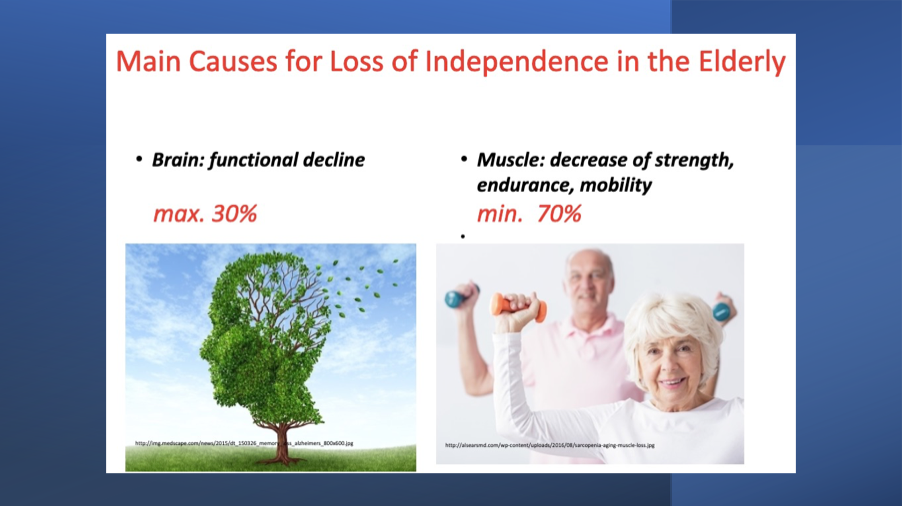
Over the past two decades, there has been increasing research into the causes, prevention and potential treatments for the variety of forms of dementia & milder cognitive decline.
There is, however, increasing effort and research into, not only declining cognitive or mental functioning, but also the profound effects of declining physical function as we age.
The long-standing Whitehall study, which has examined many health parameters in British civil servants, commencing in the 1980s and continuing to this day, recently published an article in the British Medical Journal reviewing this very problem in people from the age of 65 and onwards.
The researchers examined 6000 participants from the Whitehall II study who were initially aged between 35 to 55 in the 1980s and then reviewed their physical function from age 65 & onwards for a 10-year period. Their physical function was then related to the risk for death.
Simple assessments such as walking speed, the time it takes to rise from a chair and grip strength were reviewed along with simple daily activities such as dressing, ability to perform personal hygiene, cooking and shopping.
The study showed that poor motor function in any of these areas was associated with an increased risk of death. If you were in the slowest walking speed group there was an increased risk of death over the 10-year period of 22%. With poor grip strength, 15% and slow chair rising, 14%.
Even more profound were problems with achieving simple daily activities which increased death risk round 30%.

This then raises the concept of frailty. When you consider frailty, you imagine a very elderly, thin person, typically bent over with at least a walking stick or possibly even in a wheelchair. Unfortunately, frailty is more common and more pervasive than this typical stereotype.
A study of 3000 people over the age of 65 followed for two & a half years revealed that frailty is much more common than once thought. It appears that 6% of people over the age of 65 who were surveyed were considered frail, whereas 38% were considered pre-frail, leaving only 56% in the healthy aging group. The news is even worse for women where this is 8% being frail and 41% pre-frail whereas with men frailty occurs in 5%, pre-frailty in 34%.
So, what is the definition of frailty? Frailty is defined as a heightened risk of illness or injury from even relatively minor stresses. Pre-frailty is where the symptoms of frailty may be present but physical capability is not diminished compared with those who are frail. The physical and physiologic consequences associated with frailty are increasing weakness, falls and tendency to fracture.
There is a very useful frail scale which goes by the acronym, strangely, FRAIL.
For every “yes answer” you score one point. If you answer yes to 3 or more questions you are considered frail whereas 1 to 2 questions are considered pre-frail.
Frail scale
From age 30 we lose muscle mass and bone mass. This is especially so for people who are inactive. Some inactive people lose 3 to 5% of bone and muscle mass per decade which accelerates over age 65. At age 30 we have maximum bone strength that starts to decline especially after menopause for women. For the first five years after menopause, the rate of bone loss can be as much as 2 to 3% per year and then 1% per year, thereafter. Typically, a female loses 53% of their peak bone mass by age 80.
Some recent interesting studies around frailty looked at 3200 adults 65 and older in the Health and Retirement study commencing in 2008. This study showed that those who consumed a moderate amount of alcohol (two standard drinks per day) were less frail and had lower inflammatory markers compared with people who were heavy drinkers or non-drinkers. This has also been shown to reduce the risk for cardiovascular disease.
The second study, in just over 3100 adults 50 and older, found that people who were considered frail and also had prolonged sitting had a much higher death rate whereas people who were not frail and sat for prolonged periods of time did not have any deleterious health effects.
The final study showed that those people who consumed a Mediterranean style diet were much less likely to be frail.
My five tips for preventing and treating frailty are as follows
Frailty is not a condition reserved for the very elderly but is something that can seriously affect health in middle age. As with all conditions, the best management is prevention.